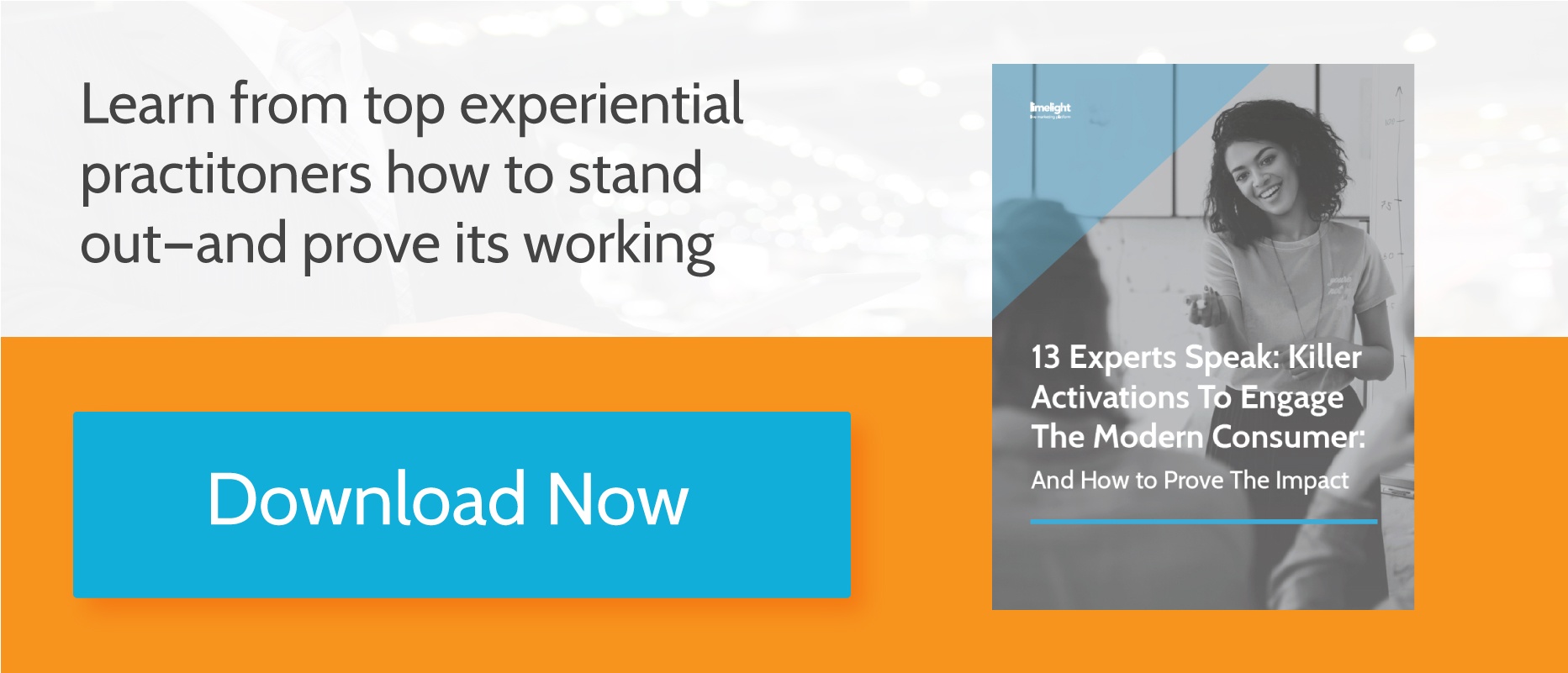AI Is The New Brand Marketing [Roundup]
.png?width=50&name=download%20(1).png) By
Julia Manoukian
·
3 minute read
By
Julia Manoukian
·
3 minute read
Brand marketers, pay attention: AI has pulled both experiential and advertising from the depths of irrelevance, bringing back consistency and relevancy where a poor consumer experience had taken place. Just like Ray Kroc saw an opportunity selling the consistency of McDonald’s experience with the rise of Interstate Highways, brand marketers have a chance to leverage AI to bring order to the Internet chaos.
The Live Marketing roundup is a weekly roundup of the latest insights in live marketing, which includes face-to-face efforts such as experiential, event and other brand marketing.
Why AI Is the New Battleground for Brand Marketers
Co-founder & chairman of machine learning system HyperGiant and CEO of conversation platform Conversable, Ben Lamm makes his case for why AI is a must-have for brand marketers today. His top two reasons are AI’s unrelenting focus on consistency and frequency.
Consistency
In Salesforce’s “State of the Connected Customer” report, 81 percent of consumers said they expect the same level of service every time they interact with a company across different channels. When consumers give their data, they expect personalization in return.
But with AI, brands can create consistency without having all the gaps filled. And a more consistent experience means consumers are satisfied and come back for more.
Effective frequency
Once upon a time, advertisers believed a consumer needed to be exposed to a message at least seven times before they acted on it. This is the definition of effective frequency. But recently, that number has been pegged anywhere between 10 to 30.
“There’s plenty of debate around effective frequency, but most marketers agree that the modern landscape is marked by a continuous battle for the consumer’s attention,” writes Lamm.
As brand and experiential marketers are pressured into more and more frequency, they risk providing an inconsistent brand experience. AI can help with creating consistency in terms of ad buying and targeting.
To summarize, brands who want to stand out and deliver a premium consumer experience have already made AI a strategic priority; those who have dismissed it are missing out on a massive opportunity for growth.
Experts reveal the 10 biggest experiential marketing trends for 2018
What will the biggest trends affecting the experiential marketing space be this year? Everything experiential spoke with 5 experts and jotted down their predictions. Make sure you've got all your ground covered by hitting as many of the points below as you can.
Ankur Karla, CEO at Vibgyor Brand Services Pvt. Ltd.
Personalization. As the industry learns how to use data better, brands can provide better targeting. This will help differentiate the best brands from the lesser ones who still use spray and pray methods to reach consumers.
Convergence of real and virtual experiences. There are a swath of tech solutions that bring together digital social and real experiences—this will be the norm for top performers.
Siddharth Ganeriwala, Founder at AURA Integrated Solutions
Crowdshaping. Using real-time data analysis, smartphones and wearables, brands can subtly impact event flow by moving attendees into specific areas of experiences.
Artificial Intelligence (AI) and Chatbots. Ganeriwala says custom messages tailored for immediate conversations will affect everything from registration assistance to virtual concierges.
Atul Nath, MD at Candid Marketing Pvt. Ltd.
Data-driven EM & Activation. Nath predicts more brands will use data-driven experiential marketing to fuel their various activations.
Integration of mobile & Technology. Doing experiential marketing in a silo is no longer effective—2018 will be the year where mobile & tech integration reign supreme.
Khantil Mehta, Director at Go Bananas
Innovation in IP segment. “With sustainable event IPs emerging, more evolved experiential content will be created across all genres (sports, retail, music, fashion, summits etc).”
Budget Allocation. Budget allocation will move from promo to ROI and measurement tools.
Oum Pradutt, Founder & MD of Phase1 Events and Entertainment Pvt. Ltd.
Digital VS Physical. According to Pradutt, one of the most embraced trends will be 'phygital' experiences, which is the conversion of experiential with digital footprints.
Augmented Reality (AR). AR has hit the big event space, but Pradutt predicts smaller brands will leverage it to have more personalized communications with its audience.
10 Experiential Marketing Statistics You Should Know in 2018
As traditional marketing and advertising grows stale, consumers are demanding more. According to Tony Owen, Digital Director at BeCore Experiential Agency, brands are doing putting more dollars into experiential because it’s “insanely effective for all generations.” But more dollars doesn’t necessarily mean more sales.
Here are 5 key stats that reinforce why you need experiential marketing and how to do it right this year.
- 74% of event attendees say they have a more positive opinion about the company, brand, or product being promoted after the event. (EventTrack)
- 98% of users feel more inclined to purchase after attending an activation. (EventTrack)
- 80% of attendees said that live demonstrations and free samples significantly help define their purchasing decision. (EventTrack)
- 98% of consumers create digital or social content at events and experiences (and 100% share the content). (EventTrack)
- 72% of consumers say friends’ posts about branded experiences makes them more likely to purchase the brand. (EventTrack)

